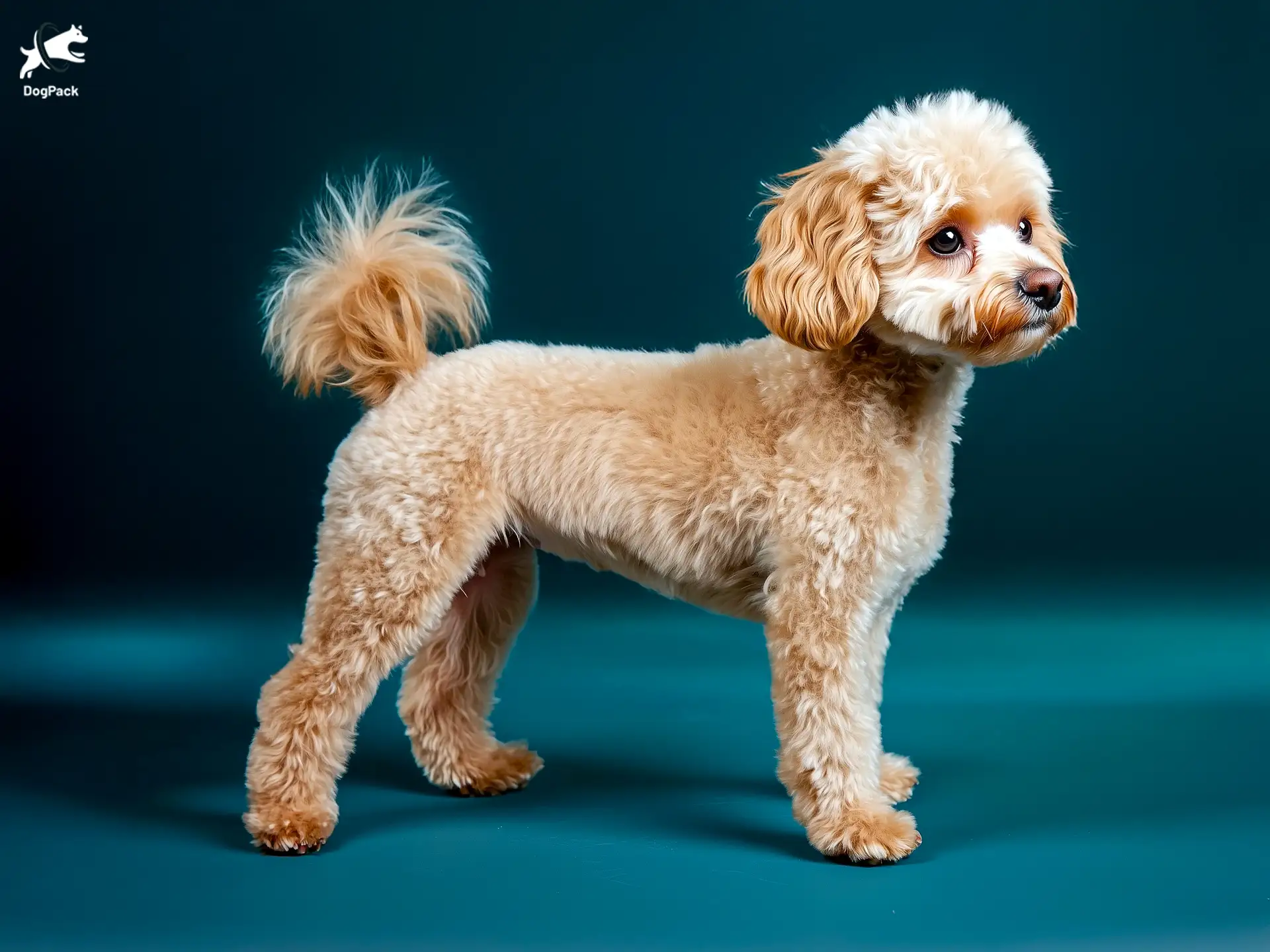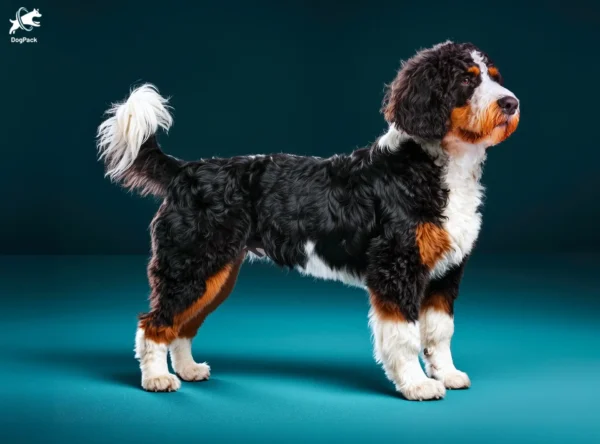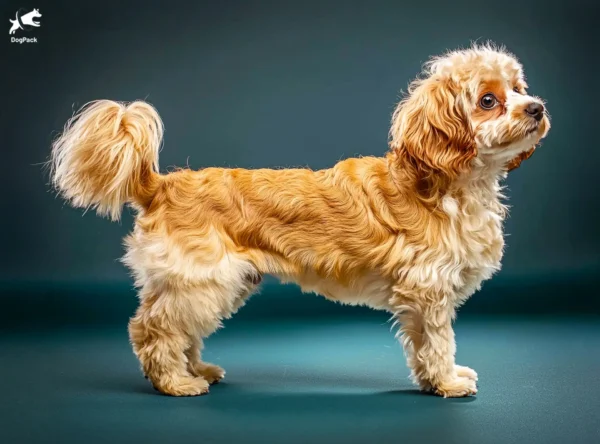Teddy Bear Doodle Dog Breed Info & Overview
Meet a sweet, plush-like Doodle that has garnered attention for its round face and cuddly appearance. Often referred to by various marketing names, the Teddy Bear Doodle isn’t a single recognized breed, but rather a nickname describing Doodle hybrids selectively bred for extra fluff and a charming, stuffed-toy look. Expect a loving companion that fits well into families who appreciate a fun, sociable dog with plenty of personality.
Characteristics
Pictures
Breed History
The term “Teddy Bear Doodle” traces back to marketing descriptions that emphasize a fluffy, teddy-like face and coat. Although Goldendoodles (Golden Retriever × Poodle) are the most commonly associated with this label, other hybrids such as Bernedoodles, Schnoodles, Cavapoos, and Labradoodles may also carry the nickname if they exhibit a plush appearance. Breeders have often selectively paired lines with curlier or wavier coats, round eyes, and compact muzzles to achieve this signature look.
While the Teddy Bear Doodle doesn’t exist as an officially recognized breed, its charm has led to widespread popularity in North America and beyond. F1, F1B, and multigenerational crosses have expanded the range of appearance, size, and coat textures. Despite varied origins, each iteration inherits an affectionate nature and a reputation for being a great companion dog, blending aspects of the Poodle’s intelligence with the friendly personality of other parent breeds.
Temperament, Personality
Teddy Bear Doodles typically inherit the gentle, social qualities that make both Poodles and their other parent breeds beloved family pets. They often show a sweet, even-tempered disposition, thriving on close contact with their humans. Because of their background in retrieving (Golden Retrievers, Labradors) or companionship (Cavalier King Charles Spaniels), Teddy Bear Doodles usually adore playtime and bond quickly with people of all ages.
Early socialization is key, especially for these dogs that can be prone to separation anxiety if left alone for long periods. Most Teddy Bear Doodles greet guests with enthusiasm, rarely displaying aggression. Instead, they prefer to be at the center of family activities, often seeking cuddles or belly rubs to satisfy their innate desire for attention and connection.
Physical Characteristics
While sizes vary widely, many Teddy Bear Doodles feature a rounder skull, shortened snout, and large, button-like eyes, creating a plush, stuffed-toy appearance. The coat can range from loose waves to tight curls, typically soft and dense—especially in Goldendoodle lines focused on the “teddy bear” face. Fur shades include cream, apricot, brown, black, parti, and merle patterns.
Their body shape often reflects a balanced proportion between Poodle slenderness and the sturdier build of the other parent breed. A medium-length tail, feathered ears, and a compact muzzle are common traits that accentuate their cute, youthful appearance. While not every hybrid inherits the full “bear-like” look, selective breeding has led to highly sought-after puppies with these teddy-esque features.
Health Issues
Because Teddy Bear Doodles encompass multiple hybrid lines, the overall health profile varies. However, owners should watch for joint problems such as hip dysplasia, particularly in larger crosses. Eye conditions like progressive retinal atrophy may appear in lines that include breeds prone to ocular disorders. Additionally, patellar luxation can occur in smaller Doodles.
Maintaining a healthy weight is crucial, as obesity can exacerbate joint stress and other conditions. Regular check-ups, orthopedic evaluations, and eye screenings are recommended to catch potential issues early. Although crossbreeding sometimes lowers the incidence of certain inherited diseases (“hybrid vigor”), conscientious breeders still perform genetic testing to promote healthier litters.
Grooming Needs
Expect moderate to high grooming needs, depending on coat texture. The signature wavy or curly hair may not shed heavily, but it tangles or mats easily without consistent brushing. A slicker brush or comb works well for reaching down to the undercoat. Plan on brushing at least three times a week, or daily for longer, denser coats.
Baths every six to eight weeks help keep the coat free of debris and skin irritations, especially if your Teddy Bear Doodle is active outdoors. Regular ear checks prevent moisture buildup, reducing the risk of infections common in floppy-eared dogs. Clipping or trimming the coat every few months helps maintain the plush look—and many owners opt for a “teddy bear cut” to emphasize their dog’s round features.
Exercise Requirements
Though not as driven as a working sled dog, the Teddy Bear Doodle still needs regular activity. About an hour or more of exercise per day—via walks, play sessions, or fetch—helps maintain both physical health and mental well-being. Most will eagerly participate in fun family outings like moderate hikes, park visits, or games of tug.
For smaller varieties, exercise should be tailored to their size, being mindful of overexertion. Larger Teddy Bear Doodles often have enough stamina for more robust outdoor adventures. Regular engagement beyond simple walks—like puzzle toys or structured play—also helps prevent boredom, which can lead to unwanted behaviors such as chewing or excessive barking.
Training Tips
Positive reinforcement techniques—treats, praise, and gentle encouragement—generally yield great results with these eager-to-please dogs. Their Poodle heritage often manifests in high intelligence, so short and engaging sessions can prevent boredom. Ensure consistency in commands and routines, as Teddy Bear Doodles thrive when they understand what’s expected.
Early socialization is especially important, exposing puppies to a variety of people, animals, and settings. This helps them develop confidence and adaptability. Group obedience classes, online tutorials, or professional trainers can offer structure, but many owners find that Teddy Bear Doodles learn readily at home, provided training sessions are fun, clear, and consistent.
Nutrition, Diet
Nutritional needs depend on size and activity level. An average mid-sized Teddy Bear Doodle weighing around 30 pounds might need roughly 800–1,000 calories a day, divided into two meals. Prioritize high-quality protein sources (chicken, fish, or turkey) and balanced formulas that cater to the dog’s life stage, from puppy growth to senior support.
Monitor treats carefully; while Teddy Bear Doodles love to earn rewards, overfeeding can quickly lead to weight gain. Look for wholesome, low-calorie treats like carrot sticks or small portions of freeze-dried meat. For dogs with sensitive stomachs—particularly in lines prone to digestive issues—opt for limited-ingredient diets or consult a veterinarian for specialized guidance.
Adoption, Breeders
Because “Teddy Bear Doodle” is an informal term, searching adoption databases under related hybrids (Goldendoodle, Bernedoodle, etc.) can sometimes uncover a fluffy gem in need of a home. Rescue organizations dedicated to Poodle mixes are another reliable resource. Websites like Petfinder or Adopt-a-Pet let you filter for specific crossbreeds.
If purchasing a puppy, choose breeders who conduct health screenings and emphasize proper socialization. A reputable source won’t solely market the “cute” factor—responsible programs focus on solid genetic foundations, clear health testing, and lifelong support for new owners. For additional insights into fluffier dog types, check out this blog post on dogs that look like bears, which includes other similarly adorable breeds.
Family Pet?
The Teddy Bear Doodle’s gentle demeanor and social nature make it well-suited for families of all types. Children often adore these dogs’ cuddly appearance, though supervision is wise to ensure respectful interaction on both sides. Their moderate-to-high energy levels mean they enjoy romping around with kids, and they tend to bond closely with household members.
Although generally friendly to other pets, individual temperament varies. Early introductions and consistent training help smooth inter-pet relationships. Given their eagerness to be part of family life, Teddy Bear Doodles thrive when they have human company and may become anxious if left alone for extended periods. Families who can provide routine companionship, a safe environment, and plenty of affection typically find these dogs wonderful additions.
Right For You?
If you’re seeking an affectionate, social companion that doesn’t shed as heavily as many double-coated breeds, the Teddy Bear Doodle might be an excellent match. Their adaptable size range means there’s likely a version that fits your living space, from smaller city apartments to larger suburban homes. However, they do need mental stimulation and physical activity to stay happy and well-adjusted.
Owners who travel frequently or have limited time for walks and play sessions might struggle with this dog’s high social needs. Regular grooming—both brushing and periodic trimming—must also factor into your schedule and budget. Still, for those wanting a sweet-natured, trainable family pet with an unmistakable “stuffed animal” charm, the Teddy Bear Doodle can be a delightful choice.
Conclusion
Though not an officially recognized breed, the Teddy Bear Doodle has captured hearts with its plush face, friendly temperament, and moderate energy level. These dogs combine the intelligence of Poodles with the sociable qualities of other parent breeds, resulting in devoted companions who seamlessly integrate into active households. From cozy evenings on the couch to fun outdoor adventures, the Teddy Bear Doodle shines when given affection, thoughtful training, and plenty of attention. If you’re looking for a warmhearted, endearing canine friend with an irresistibly cuddly appearance, this “breed” may just win you over.
FAQs
-
What makes the Teddy Bear Doodle different from other Doodles?
The Teddy Bear Doodle is not a specific breed but a nickname for Doodle mixes bred for their soft, rounded facial features, resembling a plush teddy bear. They are often crosses of Poodles with smaller breeds like Shih Tzus, Bichons, or Cavaliers, making them distinct from standard Goldendoodles or Labradoodles.
-
What sizes do Teddy Bear Doodles come in?
Since “Teddy Bear Doodle” refers to a look rather than a single breed, sizes vary. Most commonly, they are small to medium-sized, ranging from 10 to 40 pounds, depending on the parent breeds. Miniature versions are popular for apartment living.
-
Do Teddy Bear Doodles keep their teddy bear look as they grow?
Yes, with regular grooming and proper coat maintenance, Teddy Bear Doodles retain their fluffy, round appearance into adulthood. Many owners opt for a Teddy Bear cut, which trims the coat in a way that enhances their plush, rounded features.
-
Are Teddy Bear Doodles good for first-time dog owners?
Yes! Teddy Bear Doodles are known for their friendly, adaptable, and affectionate nature, making them excellent for first-time owners, families, and even seniors. Their intelligence and trainability, inherited from Poodles, make them easy to handle with consistent positive reinforcement.
-
Do Teddy Bear Doodles have high energy levels?
Most Teddy Bear Doodles have moderate energy levels, requiring 30 to 60 minutes of exercise daily. They enjoy interactive play, short walks, and mental stimulation but are not as high-energy as standard Doodles like Goldendoodles or Labradoodles.
Breed Ratings
Quick learners due to Poodle heritage.
Enjoy games, fetch, and play with children.
Moderate to high; needs daily exercise.
Typically low to moderate shedding, but coat upkeep is crucial.
Usually mild, yet some individuals may chase small critters.
Requires frequent brushing to prevent matting; grooming can be moderately time-consuming.
Highly responsive to positive reinforcement, though consistent practice is key.
Prone to separation anxiety; thrives on human interaction.
Can be vocal when bored or excited, but usually not excessive with sufficient stimulation.
Very low drool potential; mostly a non-issue for this hybrid.
Generally sociable, especially when socialized early.
Good overall; watch for hip, eye, or patella issues.













